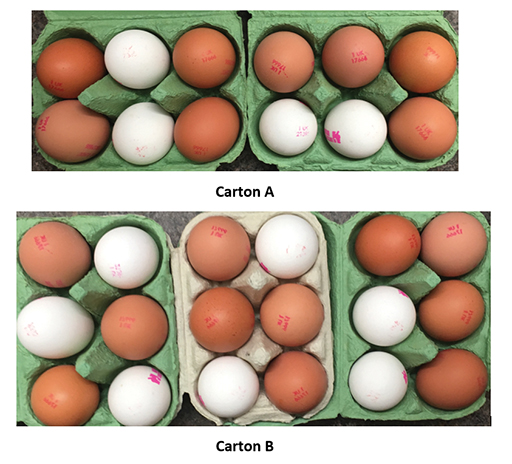1.2 When to use multiplicative thinking
It is important for learners to distinguish between situations which require additive reasoning and those which require multiplicative, or proportional, reasoning.
The following example offers some possible discussion points for learners.
Activity _unit4.1.5 Activity 5 Questioning learners
As you read the problem below, think of some questions you could ask learners to promote analysis of each situation in additive and multiplicative terms. Make a note of the questions you could ask in the box below the task.
Using boxes of eggs to create questions for the classroom
Each of the cartons in Figure 6 contains some white eggs and some brown eggs. Which has more brown eggs?
Discussion
Possible questions to ask learners
- How many brown eggs are there in each box?
- How many brown eggs are there in comparison to white eggs in each box?
- What is the relationship between brown and white eggs in each box?
- What is the fraction of brown eggs in each box?
- What is the ratio of white to brown eggs in each box?
Asking learners questions such as ‘how many brown eggs are in each box?’ encourages learners to reason additively.
Discussions about relationships lead learners to think proportionally.
Depending on the age and experience of the learners, discussions can move on to comparing fractions, ratios or percentages as ways to represent the proportion of brown eggs in each box.

